Explore null | Canon Latin America

EOS Rebel SL1
- EOS Rebel SL1 Body
- EF-S 18-55mm f/3.5-5.6 IS STM lens
- Eyecup Ef (Not shown)
- Battery Pack LP-E12
- Battery Charger LC-E12
- Wide Strap EW-300D
- USB Interface Cable IFC-130U
- EOS Digital Solution Disc & Software Instruction Manual CD
- Camera Instruction Manual (not shown)
-
OVERVIEW
-
SPECIFICATIONS
-
ACCESSORIES
-
RESOURCES
-
SUPPORT
-
MISCELLANEOUS
Small Size, Big Possibilities.
As the world's smallest and lightest digital SLR camera*, the new EOS Rebel SL1 is small in size but enormous in performance. With a newly-designed Canon 18.0 Megapixel CMOS (APS-C) sensor and speedy Canon DIGIC 5 Image Processor, it delivers images of extraordinary quality - ideal for those stepping up from a smartphone or compact camera. An impressive ISO range of 100-12800 (expandable to H: 25600) for stills and 100-6400 (expandable to H: 12800) for video plus up to 4.0 fps continuous shooting make this camera the go-to for any photo opportunity, even in dim lighting or when capturing fast action subjects. And Hybrid CMOS AF II delivers accurate AF tracking during Live View shooting, helping ensure your photos and movies are crisp and clear. The EOS Rebel SL1 makes amazing movies with Canon EOS Full HD Movie Mode with Movie Servo AF, working in concert with Canon STM lenses for smooth and quiet continuous AF. In addition to its Optical Viewfinder, the EOS Rebel SL1 has a bright, wide Touch Screen 3.0" Clear View LCD monitor II, perfect for viewing a number of special scene modes and Creative Filters available in real-time display. Here is the DSLR you'll want to bring with you everyday and ignite your imagination!
* Among digital SLR cameras which use APS-C size equivalent sensors. As of March 1, 2013, based on Canon's research.





























For ultra portability with a minimal footprint, the EOS Rebel SL1 is the world's smallest and lightest digital SLR camera*. Weighing in at approximately 13 ounces, the EOS Rebel SL1's astonishingly compact size does not compromise its excellent performance as a member of the Canon EOS family: it features an 18.0 Megapixel CMOS (APS-C) sensor, the speedy DIGIC 5 Image Processor, a wide ISO range for both stills and video, and advanced AF performance. Designed for entry-level DSLR users, the EOS Rebel SL1 ensures performance and operation while still remaining compact.
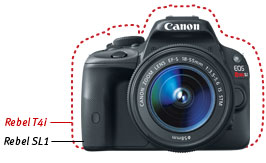
18.0 Megapixel CMOS (APS-C) sensor
The EOS Rebel SL1 features a newly-developed Canon 18.0 Megapixel CMOS (Complementary Metal Oxide Semiconductor) sensor in the world's smallest and lightest digital SLR*. Perfect for enlargements or for cropping detailed portions of the composition, the camera's sensor captures images with exceptional clarity and tonal range. This first-class sensor features many of the same technologies used by professional Canon cameras to maximize each pixel's light-gathering efficiency and has center pixels that aid in the EOS Rebel SL1's accurate AF performance. This APS-C size sensor creates an effective 1.6x field of view (compared to 35mm format).
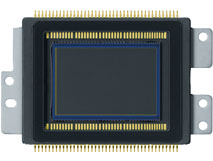
ISO 10012800 (expandable to H: 25600) for stills; ISO 1006400 (expandable to H: 12800) for videos
Thanks to its DIGIC 5 Image Processor, the EOS Rebel SL1 features an ISO range of ISO 10012800 (expandable to H: 25600) for stills and ISO 1006400 (expandable to H: 12800) for videos that makes shooting possible in situations previously unthinkable without flash. The EOS Rebel SL1, with the DIGIC 5 Image Processor's remarkable noise-reduction technology, performs brilliantly in low-light shooting. Used with one of Canon's EF or EF-S lenses with Optical Image Stabilizer, the EOS Rebel SL1 can record beautiful images and video even when light sources are scarce.
DIGIC 5 Image Processor
The EOS Rebel SL1's DIGIC 5 Image Processor works with the camera's CMOS sensor to deliver images with incredible detail in more situations, without the need for artificial light sources. With the power of the DIGIC 5 Image Processor, the EOS Rebel SL1 can achieve higher ISO sensitivity, can shoot up to 4.0 fps continuously and can even perform advanced functions like displaying art filters in real time, new scene modes, lens correction and much more. The camera's brilliant imaging core supercharges every facet of still and moving image capture.
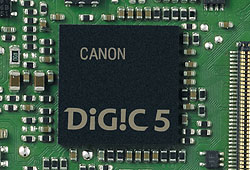
*Among digital SLR cameras which use APS-C size equivalent sensors. As of March 1, 2013, based on Canon's research.
The EOS Rebel SL1 can shoot up to 4.0 frames per second (fps) for up to approximately 7 consecutive RAW files or approximately 28 full-resolution JPEGs. Shooting at speeds of up to 1/4000 sec., the EOS Rebel SL1 can capture even rapidly unfolding scenes with ease.
The EOS Rebel SL1 offers easy-to-use, professional video capture without compromise. Capable of shooting in a number of recording sizes and frame rates, the EOS Rebel SL1 offers outstanding video capturing performance, quality and simplicity. The EOS Rebel SL1 enables easy manual control of exposure, focus and Live View features, even in-camera editing! Movie Servo AF allows continuous autofocus tracking of moving subjects while recording video. When shooting video with one of Canon's STM lenses, Movie Servo AF takes advantage of the lens' stepping motor for smooth and quiet continuous AF. With an STM lens attached, the EOS Rebel SL1 meets high standards for SLR moviemaking performance!
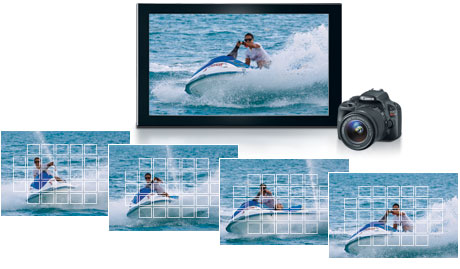
| Resolution & Recording Sizes | Frame Rates |
| Full HD 1920 x 1080 16:9 format |
30 fps (29.97) |
| 25 fps PAL standard | |
| 24 fps (23.976) | |
| HD 1280 x 720 16:9 format |
60 fps (59.94) |
| 50 fps PAL standard | |
| Standard Definition (SD) 640 x 480 |
30 fps (29.97) |
| 25 fps PAL standard |
Built-in monaural microphone, manual audio level adjustment
The EOS Rebel SL1 has an internal monaural microphone for audio capture and a wind filter feature to reduce wind noise when shooting outdoors. Sound recording levels can be manually (up to 64 different levels) or automatically controlled. A built-in attenuator is also provided to reduce audio clipping. For more advanced audio recording, the EOS Rebel SL1 is compatible with many third-party electret condenser microphones with a 3.5mm diameter plug.
Video Snapshot
With the Video Snapshot feature, the EOS Rebel SL1 can capture short video clips (of 2, 4 or 8 seconds) then combine them automatically into one video file as a snapshot or highlights "album". With no editing needed after shooting, the compiled video is perfect for sharing online or displaying directly on an HDTV via the camera's HDMI port. Additionally, stills can be recorded during video shooting simply by pressing the camera's shutter button. During playback, video clips in an album can be reordered or deleted.

Using capacitive touch screen technology similar to today's popular mobile devices, the EOS Rebel SL1's gorgeous LCD monitor is touch-sensitive, delivering intuitive operation with ease. Two-finger touch gestures can be used for zooming or changing images. Menu and quick control settings can be accessed, and focus point and shutter release can be activated with the touch of a fingertip using Touch AF. Displaying fine detail (at approximately 1.04 million dots), the camera's Touch Screen Wide 3.0-inch Clear View LCD monitor II is perfect for composing and reviewing images. Thanks to a new, solid construction between the monitor's resin-coated cover and the liquid crystal display, reflections are minimized, and the display can be viewed, without glare, from any number of angles. The LCD's surface is treated with a smudge-resistant coating to minimize fingerprints and to maintain a bright, clear image display.

Optical Viewfinder with approx. 0.87x magnification
In addition to its amazing multi-touch screen, the EOS Rebel SL1 also sports an Optical Viewfinder, ideal for composing shots when shooting in bright conditions or capturing the moment as it unfolds. Shooting with the Optical Viewfinder also ensures steadier images. The viewfinder displays exposure, AF, flash, plus other relevant image information right along with the image. The 0.87x magnification factor ensures that subjects are easier to find and track.
When shooting through the viewfinder, the EOS Rebel SL1 has exceptional autofocus with a sophisticated 9-point AF system, including a high-precision cross-type f/2.8 center point, for accurate focus whether the camera is oriented in portrait or landscape position. A proven AI Servo AF system achieves and maintains consistent focus with an exceptional degree of reliability.
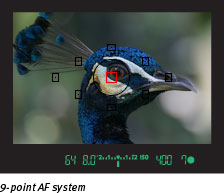
Hybrid CMOS AF II
Canon's amazing Hybrid CMOS AF System is perfect for shooting photos and video in Live View. Combining two different kinds of AF phase and contrast detection and aided by pixels on the camera's CMOS sensor that assist in predicting subject location, continuous focus tracking becomes faster and more accurate than ever before in Live View. And with the EOS Rebel SL1 you'll get Hybrid CMOS AF II, which provides the same fantastic performance as the original but boasts an increased AF area that covers approximately 80% of the sensor for easier composition. This performance is enhanced further by Canon's line of STM lenses, which provide smooth and quiet operation.
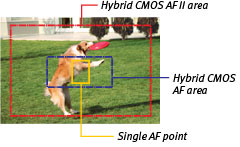
The EOS Rebel SL1 features Scene Intelligent Auto mode, which incorporates a number of Canon technologies to deliver the best possible exposure. Joining Picture Style Auto, Automatic Lighting Optimizer, Automatic White Balance, Autofocus, and Automatic Exposure, Scene Intelligent Auto mode analyzes the image, accounting for faces, colors, brightness, moving objects, contrast, even whether the camera is handheld or on a tripod, and then chooses the exposure and enhancements that bring out the best in any scene or situation. Users without extensive photography knowledge or experience will not need to puzzle over settings; the Scene Intelligent Auto mode simplifies DSLR image capture so photographers can simply concentrate on composing images.
Adding to the fun and creative possibilities available with the EOS Rebel SL1, the camera offers seven different creative filters for still images: Art Bold Effect, Water Painting Effect, Miniature Effect, Fisheye Effect, Grainy B/W, Soft Focus and Toy Camera Effect. Each effect can be applied in three different levels (low, standard and strong), and easily previewed on the LCD panel during Live View shooting. The EOS Rebel SL1 also features the new Miniature Effect for Movies. You will be amazed and delighted by the artistry that these creative filters will allow you to create.
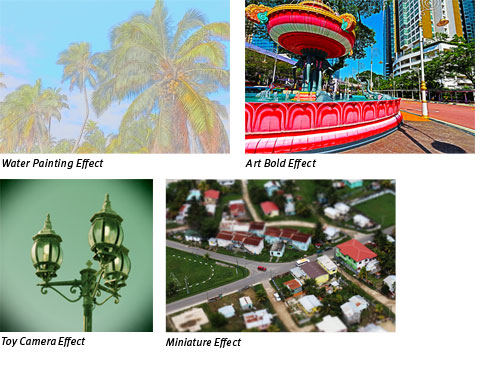
Effect Shot mode and Background Simulation
Among the dynamic new features designed to make creative photography both intuitive and fun, the EOS Rebel SL1 has Background Simulation, which makes it easy for beginners to achieve dramatic blurred or sharpened backgrounds. The result is previewed on the LCD screen, so users can see in advance how their final image will look. Plus, a new Effect Shot feature automatically captures two shots simultaneously: one without effect, and one with a preselected Picture Style or Creative Filter effect. This makes it easy to see how each effect changes the photo without compromising the original image. Effect Shot mode is available in both Live View and viewfinder-based shooting, and can easily be viewed immediately in playback mode.
The EOS Rebel SL1 has three new easily accessible scene modes to capture the perfect image the first time. Kids mode ensures high-speed shutter priority, focus tracking, healthy skin tones and flash when needed; Food mode delivers bright, vivid food images, limits flash by default and limits the red tint often associated with "restaurant plate" photography. With Candlelight mode, the camera will take care not to blow out the scene, maintaining the glow of the candle, leaving the flash off and reducing exposure fluctuation.

The EOS Rebel SL1 uses popular SD, SDHC, SDXC, and is even compatible with Ultra High Speed (UHS-I), memory cards. Compact and available in large capacities, SD, SDHC and SDXC memory cards are a perfect complement to the camera's compact design.
Additionally, the EOS Rebel SL1 is compatible with Eye-Fi* SD cards, which are outfitted with a Wi-Fi® transmitter (IEEE 802.11b/g) and an internal antenna for wireless, high-speed transfer of images. With an Eye-Fi card installed, the EOS Rebel SL1 can display the Eye-Fi's connection status and error notes with ease, for fully functional wireless uploading of images directly from the camera.
* Canon cameras are not guaranteed to support Eye-Fi card functions, including wireless transfer. In case of an issue with the Eye-Fi card, please consult with the card manufacturer. The use of Eye-Fi cards may not be available outside the United States and Canada; please contact the card manufacturer for territory availability.
The EOS Rebel SL1 is compatible with all Canon lenses in the EF lineup, including compact and lightweight EF-S lenses, ranging from ultra-wide angle to super telephoto lenses and including the STM series, like the new EF-S 1855mm f/3.55.6 IS STM, optimized for video shooting. Canon lenses employ advanced optical expertise and micron-precision engineering to deliver outstanding performance and deliver beautiful results. Special technologies like Canon's Optical Image Stabilizer help to minimize the effect of camera shake, effectively adding up to four stops of light; STM lenses even feature a stepping motor for smooth and quiet continuous autofocus while capturing video. With an array of lenses perfect for travel, sports, still life and everything in between, photographers can truly maximize the quality and performance of their EOS Rebel SL1.
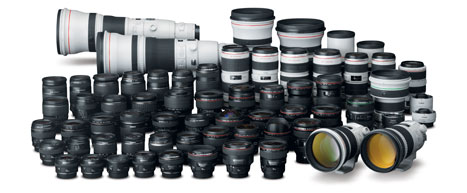
The EOS Rebel SL1 features lens correction tools that compensate for lens characteristics that can affect overall image quality. The EOS Rebel SL1's Peripheral Illumination Correction feature corrects light falloff in the corner of the image according to the characteristics of the lens being used. It even has correction data for a number of popular lenses stored in its memory. With the EOS Rebel SL1's chromatic aberration correction tool, distracting color fringing can be corrected at the time of shooting.
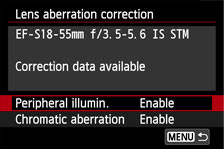
Feature Guide
To help explain the specific function of features found on the EOS Rebel SL1, the Feature Guide displays a simple description helpful in determining the applicability for the situation at hand. It is displayed in each shooting mode, during mode dial operations, and for Quick Control screen functions. It appears automatically when a function is selected a lifesaver when trying to determine the best mode or function for the next picture. The feature guide works automatically by default, and can be disabled easily through the camera's menu.

GPS Compatible
With the optional GPS Receiver GP-E2 attached to the hot shoe or the digital terminal, the EOS Rebel SL1 can record location, including latitude, longitude and altitude, and has the ability to track the trajectory of movement with its logging function. An electric compass records the camera's orientation during each shot, and world time information is recorded through GPS syncing.
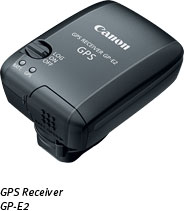
JPEG Resizing
To create images suitable for sharing by email or online, the EOS Rebel SL1 can resize JPEG files, in-camera, of varying pixels (aspect ratio cannot be changed, only the image size can be decreased) while leaving the original image untouched.
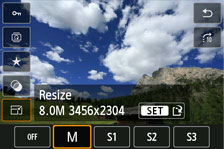
Photobook Set-up
Photographers can share their images in book form with the EOS Rebel SL1's convenient Photobook Set-up feature. Users can easily choose specific images, images in a folder and even all images, then specify their sequence and layout. The results can be printed in book form with ease.
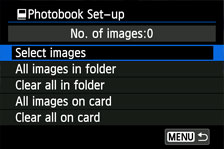
Image Rating
To help organize images recorded to the camera's storage, the EOS Rebel SL1 makes it simple to rate individual images from one star to five. Therefore, image browsing, printing and slide shows can be based upon those ratings.
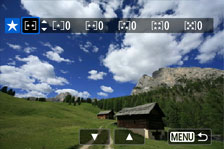
Cropping
Eliminating the need to post-process in the computer, photographers can easily crop their photos right in the EOS Rebel SL1. Perfect for direct connection to a printer, or in situations when it wasn't possible to zoom in enough with a zoom lens, cropping is a viable solution thanks to the camera's excellent 18.0-megapixel resolution. Users can choose vertical or horizontal images, and 3:2, 4:3, 16:9, even 1:1 aspect ratios.
| Type | Digital AF/AE Single-Lens Reflex Camera With Built-In Flash | ||||||||||||||||||||
| Recording Medium | SD Card, SDHC Card, SDXC Memory Card * Compatible With Ultra High Speed (UHS-I) And Eye-Fi Cards. * Eye-Fi Card Compatible |
||||||||||||||||||||
| Image Format | Approx. 22.3mm X 14.9mm (APS-C) | ||||||||||||||||||||
| Compatible Lenses | Canon EF Lenses (Including EF-S Lenses) | ||||||||||||||||||||
| Lens Mount | Canon EF Mount | ||||||||||||||||||||
| Type | CMOS Sensor | ||||||||||||||||||||
| Pixels | Effective Pixels: Approx. 18.0 Megapixels | ||||||||||||||||||||
| Pixel Unit | 4.3 µm Square | ||||||||||||||||||||
| Total Pixels | Total Pixels: Approx. 18.50 Megapixels: 5288 (H) X 3506 (V) Pixels | ||||||||||||||||||||
| Aspect Ratio | 3:2 (Horizontal : Vertical) | ||||||||||||||||||||
| Color Filter System | RGB Primary Color Filters | ||||||||||||||||||||
| Low Pass Filter | Fixed Position In Front Of The Image Sensor | ||||||||||||||||||||
| Dust Deletion Feature | (1) Self Cleaning Sensor Unit Removes Dust Adhering To The Low-Pass Filter. Self-Cleaning Executed Automatically (Taking Approx. 2 Sec.) When Power Is Turned On Or Off. Manual Execution Also Possible (Taking Approx. 5 Sec.). (2) Dust Delete Data Acquisition And Appending The Coordinates Of The Dust Adhering To The Low-Pass Filter Are Detected By A Test Shot And Appended To Subsequent Images. The Dust Coordinate Data Appended To The Image Is Used By The Provided Software To Automatically Erase The Dust Spots. (3) Manual Cleaning |
||||||||||||||||||||
| Recording Format | Complies With Design Rule For Camera File System 2.0 And Exif 2.30 | ||||||||||||||||||||
| File Size | (1) Large: Approx. 17.90 Megapixels (5,184 X 3,456) (2) Medium: Approx. 8.00 Megapixels (3,456 X 2,304) (3) Small 1: Approx. 4.50 Megapixels (2,592 X 1,728) (4) Small 2: Approx. 2.50 Megapixels (1920 X 1280) (5) Small 3: Approx. 0.35 Megapixels (720 X 480) (6) RAW: Approx. 17.90 Megapixels (5,184 X 3,456) |
||||||||||||||||||||
| Backup Recording | N/A | ||||||||||||||||||||
| File Numbering | The Following Three Types Of File Numbering Methods Can Be Set: (1) Continuous Numbering * The Numbering Of Captured Images Will Continue Even After You Replace The Camera's Card. (2) Auto Reset * When You Replace The Camera's Card, The Numbering Will Be Reset To Start From 0001. If The New Card Already Contains Images, The Numbering Will Continue From The Last Recorded Image In The Card. (3) Manual Reset * Resets The File Number To 0001, And Creates A New Folder Automatically. |
||||||||||||||||||||
| Raw Jpeg Simultaneous Recording | Still: JPEG, RAW (Canon RAW 2nd Edition), RAW+JPEG Video: MOV (Image Data: H.264, Audio: Linear PCM) |
||||||||||||||||||||
| Color Space | SRGB, Adobe RGB | ||||||||||||||||||||
| Picture Style | Auto, Standard, Portrait, Landscape, Neutral, Faithful, Monochrome, User Defined 1-3 | ||||||||||||||||||||
| Settings | Auto, Preset (Daylight; Shade; Cloudy, Twilight, Sunset; Tungsten Light; White Fluorescent Light; Flash), Custom (Approx. 2,000° - 10,000°K), White Balance Correction, And White Balance Bracketing | ||||||||||||||||||||
| Auto White Balance | Auto White Balance With The Image Sensor | ||||||||||||||||||||
| Color Temperature Compensation | White Balance Correction:
|
||||||||||||||||||||
| Color Temperature Information Transmission | Provided | ||||||||||||||||||||
| Type | Eye-Level SLR (With Fixed Pentamirror) | ||||||||||||||||||||
| Coverage | Approx. 95% Vertically And Horizontally (With Eye Point Approx. 19mm) | ||||||||||||||||||||
| Magnification | Approx. 0.87x / 24.5° (50mm Lens ∞, -1m-1) | ||||||||||||||||||||
| Eyepoint | Approx. 19 Mm (At -1m-1 From The Eyepiece Lens Center) | ||||||||||||||||||||
| Dioptric Adjustment Correction | -3.0 To +1.0 M-1 (Dpt) | ||||||||||||||||||||
| Focusing Screen | Fixed | ||||||||||||||||||||
| Mirror | Quick-Return Half Mirror (Transmission: Reflection Ratio Of 40:60) | ||||||||||||||||||||
| Viewfinder Information | 1) AF Information (AF Points And Focus Confirmation Light) 2) Exposure Information (Shutter Speed, Aperture, ISO Speed (Always Displayed), AE Lock, Exposure Level, Spot Metering Circle, Exposure Warning) 3) Flash Information (Flash Ready, Flash Exposure Compensation, High-Speed Sync, FE Lock, Red-Eye Reduction Light) 4) Image Information (Highlight Tone Priority (D+), Maximum Burst (1-Digit Display), White Balance Correction, SD Card Information) |
||||||||||||||||||||
| Depth Of Field Preview | Enabled With Depth-Of-Field Preview Button | ||||||||||||||||||||
| Type | TTL Secondary Image-Forming, Phase-Difference Detection | ||||||||||||||||||||
| Af Points | 9 Points (Center AF Point Is AF Cross-Type At F/5.6, Center AF Point Is Vertical Line-Sensitive At F/2.8.) | ||||||||||||||||||||
| Af Working Range | Center AF Point: EV -0.5 - 18 Other AF Points: EV 0.5 - 18 (At Room Temperature And ISO 100, Based On Canon's Testing Standards) |
||||||||||||||||||||
| Focusing Modes | (1) Autofocus One-Shot AF Predictive AI Servo AF AI Focus AF (*Switches Between One-Shot AF And AI Servo AF * Automatically Set To One-Shot AF When The Drive Mode Is Set To Silent Single Shooting Or Silent Continuous Shooting. (AI Servo AF And AI Focus AF Cannot Be Selected.) (2) Manual Focus (MF) |
||||||||||||||||||||
| Af Point Selection | (1) Manual Selection (2) Auto Selection * Automatically Set In Basic Zone Modes. |
||||||||||||||||||||
| Selected Af Point Display | Indicated By Superimposed Display In The Viewfinder And On The LCD Monitor | ||||||||||||||||||||
| Af Assist Beam | (1) Intermittent Firing Of Built-In Flash (2) Effective Range: Approx. 13.1 Ft./4 M. At Center, Approx. 11.5 Ft /3.5 M. At Periphery * With An EOS-Dedicated Speedlite Attached, The Speedlite's AF-Assist Beam Is Emitted Instead. * Compatible With AF Assist-Beam (Intermittent Firing) Of 320EX, 270EX II, And 270EX Flashes. |
||||||||||||||||||||
| Metering Modes | TTL Maximum Aperture Metering With 63-Zone Metering Sensor: 1) Evaluative Metering (Linked To All AF Points) 2) Partial Metering (Center, Approx. 9% Of Viewfinder) 3) Spot Metering (Center, Approx. 4% Of Viewfinder) 4) Center-Weighted Average Metering |
||||||||||||||||||||
| Metering Range | EV 1.0 - EV 20.0 (At 73°F/23°C With 50mm F/1.8 II Lens At ISO 100) | ||||||||||||||||||||
| Exposure Control Systems | Creative Zone (1) Program AE (Shiftable) (2) Shutter-Priority AE (3) Aperture-Priority AE (4) Manual Exposure (Including Bulb) Basic Zone (1) Scene Intelligent Auto (Program AE / Non-Shiftable) (2) Flash Off (3) Creative Auto * Effect Shots Cannot Be Set Simultaneously With Ambience-Based Shots Or Background Blurring. Neither Can Continuous Shooting Or 2 To 10 Shots After 10-Sec Self-Timer Be Used With Effect Shot. * When Background Blurring Is Set, Shooting With Flash Is Disabled. When The Flash Is Raised, Background Blurring Cannot Be Set. (4) Portrait (5) Landscape (6) Close-Up (7) Sports (8) Special Scene - Kids - Food - Candlelight - Night Portrait - Handheld Night Scene - HDR Backlight Control Mode |
||||||||||||||||||||
| Iso Speed Range | For Stills: 1. Manual Setting Range Of ISO 100-12800, Expansion To ISO 25600 2. Auto, ISO 100-6400 (In Whole-Stop Increments) - In Creative Zone Modes, The Maximum ISO Speed (ISO 400, 800, 1600, 3200, Or 6400) For ISO Auto Can Be Set. - With Highlight Tone Priority, ISO 200 Or Higher Will Be Set.
*1: Fixed At ISO 400 For Bulb Exposures. *2: Depends On The Maximum ISO Speed That Has Been Set. *3: If Fill-Flash Will Result In Overexposure, The ISO Speed Can Be Set As Low As ISO 100. *3: Scene Intelligent Auto, Night Portrait And Handheld Night Scene Modes Are Excluded. *4: Not Applicable To Auto, Kids, Night Portrait, Or Handheld Night Scene. *5: If You Use Bounce Flash With An External Speedlite In The Creative Auto, Portrait, Landscape, Close-Up, Sports, Food, Candlelight And P Modes, The ISO Speed Is Set Automatically Within ISO 4001600 (Or Up To The Maximum Limit) To Match The Brightness. |
||||||||||||||||||||
| Exposure Compensation | Manual: ±5 Stops In 1/3- Or 1/2-Stop Increments AEB : ±2 Stops In 1/3- Or 1/2-Stop Increments * If The Exposure Compensation Exceeds ±2 Stops, The Left Or Right Icon Appears In The Viewfinder. * Manual Exposure Compensation And AEB Can Be Set In Combination. * AEB Is Set In The Following Sequence: Standard Exposure, Decreased Exposure, And Increased Exposure. * If AEB Is Used With The Self-Timer, The Three Bracketed Shots Will Be Taken In Succession After The 10-Sec. Or 2-Sec. Delay. |
||||||||||||||||||||
| Ae Lock | (1) Auto AE Lock * In The One-Shot AF Mode With Evaluative Metering, AE Lock Takes Effect When Focus Is Achieved. (2) Manual AE Lock * In The P, Tv, Av, And M Modes, Enabled With The AE Lock Button. (Press Again To Update.) * Enabled In All Metering Modes. |
||||||||||||||||||||
| Type | Vertical-Travel, Mechanical, Focal-Plane Shutter With All Speeds Electronically-Controlled * Electronic 1st Curtain And Mechanical 2nd Curtain |
||||||||||||||||||||
| Shutter Speeds | 1/4000 To 30 Sec. (Total Shutter Speed Range; Available Range Varies By Shooting Mode), Bulb, X-Sync At 1/200 Sec. * Settable In 1/3- Or 1/2-Stop Increments. |
||||||||||||||||||||
| Shutter Release | Soft-Touch Electromagnetic Release | ||||||||||||||||||||
| Self Timer | 10-Sec. Or 2-Sec. Delay | ||||||||||||||||||||
| Shutter Lag Time | (1) During SW-1 ON, Time Lag Between SW-2 ON And Start Of Exposure: Approx. 0.075 Sec. * Approx. 0.168 Seconds In Case Of Silent Shooting. (2) Time Lag Between Simultaneous SW-1/SW-2 ON And Start Of Exposure: Approx. 0.150 Sec. * Approx. 0.242 Seconds In Case Of Silent Shooting. * Time Lag With The Aperture Stopped Down By 3 Stops Or Less (Excludes AF Operation Time). |
||||||||||||||||||||
| Compatible Flash | EX-Series Speedlites | ||||||||||||||||||||
| Flash Metering | E-TTL II Autoflash (Evaluative Flash Metering And Average Flash Metering), FE Lock | ||||||||||||||||||||
| Flash Exposure Compensation | ±2 Stops In 1/3-Stop Or 1/2-Stop Increments | ||||||||||||||||||||
| Fe Lock | Provided | ||||||||||||||||||||
| External Flash Settings | (1) External Flash Function Setting * Flash Firing, E-TTL II Auto Flash System, Flash Mode, Wireless Master, Zoom, Sync Setting, Flash Exposure Compensation, FEB, And Clear Setting. * With The 600EX-RT, Radio Wireless Transmission Control Is Possible. (2) External Flash C.Fn Setting * The Actual Setting Options For (1) And (2) Will Differ Depending On The Speedlite Used. |
||||||||||||||||||||
| Pc Terminal | Not Provided | ||||||||||||||||||||
| Drive Modes | (1) Single Shooting (2) Continuous Shooting (3) Silent Single Shooting (4) Silent Continuous Shooting * Single Silent Shooting And Continuous Silent Shooting Are Not Possible When Basic Zone Is Selected, During Live View Shooting, Or When Using AI Servo AF Or AI Focus AF. (5) 10-Sec. Self-Timer/Remote Control (6) 2-Sec. Self-Timer (7) Continuous Shooting After 10-Sec. Self-Timer (2 To 10 Shots) |
||||||||||||||||||||
| Continuous Shooting Speed | High-Speed Continuous Shooting: Max. Approx. 4.0 Fps * With One-Shot AF Or AI Servo AF Silent Continuous Shooting: Max. Approx. 2.5 Fps * One-Shot AF Only |
||||||||||||||||||||
| Max Burst During Continuous Shooting | Based On 8GB Memory Card: JPEG Large/Fine: Approx. 28 Shots RAW: Approx. 7 Shots RAW+JPEG Large/Fine: 4 Shots Based On UHS-I Memory Card: JPEG Large/Fine: Approx. 1140 Shots RAW: Approx. 8 Shots RAW + JPEG Large/Fine: 4 Shots * Figures Are Based On Canon's Testing Standards (ISO 100 And Standard Picture Style). * At ISO 12800, Maximum Burst Will Greatly Decrease Due To Internal Processing. |
||||||||||||||||||||
| Shooting Modes | Still Photo Shooting And Video Shooting | ||||||||||||||||||||
| Focusing | (1) AF Operation Of The Hybrid CMOS AF, One-Shot AF I. Face Detection Plus Tracking AF Ii. FlexiZone - Multi * 31 Zones * AF At The Touched Zone Iii. FlexiZone - Single (2) TTL Secondary Image-Forming, Phase-Difference Detection With AF Operation, One-Shot AF I. Manual Selection Ii. Auto Selection * Automatically Set In Basic Zone Modes (3) Manual Focus * Manual Focusing By Enlarging Images By Approx. Five To Ten Times |
||||||||||||||||||||
| Metering Modes | Real-Time Evaluative Metering With Image Sensor. (1) Evaluative Metering (315 Zones) (2) Partial Metering (Approx. 10.3% Of Live View Screen) (3) Spot Metering (Approx. 2.6% Of Live View Screen) (4) Center-Weighted Average Metering * AE Lock Possible. The Active Metering Time Can Be Changed. |
||||||||||||||||||||
| Metering Range | EV 0 To EV 20 (At Room Temperature, 50mm F/1.4 Lens, ISO 100) | ||||||||||||||||||||
| Grid Display | Two Grids Provided: (1) Grid 1: Pair Of Vertical And Horizontal Lines (2) Grid 2: 5 Vertical And 3 Horizontal Lines |
||||||||||||||||||||
| Exposure Simulation | Provided | ||||||||||||||||||||
| Silent Shooting | Provided | ||||||||||||||||||||
| File Format | MOV: Movie: MPEG-4 AVC / H.264 * Variable (Average) Bit Rate Audio: Linear PCM * Meta Information Is Embedded In The MOV File (No Separate THM File) |
||||||||||||||||||||
| File Size | Recording Size: [Full HD] 1920 X 1080 (30 Fps/25 Fps/24 Fps): 330 MB/Min. [HD] 1280 X 720 (60 Fps/50fps): 330 MB/Min. [SD] 640 X 480 (30 Fps/25fps): 82.5 MB/Min. * If The File Size Exceeds 4GB, A New File Will Be Automatically Created. ** SD Class 6 Or Higher Required. |
||||||||||||||||||||
| Frame Rates | 1920 X 1080 (Full HD): 30p (29.97) / 24p (23.976) / 25p 1280 X 720 (HD): 60p (59.94) / 50p 640 X 480 (SD): 30p (29.97) / 25p |
||||||||||||||||||||
| Continuous Shooting Time | Based On 8GB Memory Card: [1920 X 1080] 30 Fps/25 Fps/24 Fps: 22 Min. [1280 X 720] 60 Fps/50 Fps: 22 Min. [640 X 480] 30 Fps/25 Fps: 1 Hr. 32 Min. Based On 16GB Memory Card: [1920 X 1080] 30 Fps/25 Fps/24 Fps: 44 Min. [1280 X 720] 60 Fps/50 Fps: 44 Min. [640 X 480] 30 Fps/25 Fps: 3 Hr. 4 Min. * If Recording Time Reaches 29 Min. 59 Sec., Movie Shooting Stops Automatically. |
||||||||||||||||||||
| Focusing | (1) One-Shot AF (2) Servo AF (3) Manual Focus * Magnify The Image By Approx. 5x Or Appox. 10x And Focus Manually. AF Using AF Point Selection: I. Face Detection Plus Tracking AF Ii. FlexiZone - Multi * 31 Zones * AF At The Touched Zone Iii. FlexiZone - Single |
||||||||||||||||||||
| Range | 8 Bit, 0 - 255 | ||||||||||||||||||||
| Exposure Control | (1) Program AE For Movie Shooting * In Basic Zone Modes, P, Av, And Tv Modes * Shutter Speed 1/30 - 1/4000 Sec. (Signal Accumulation Time), Aperture, And ISO Speed Automatically Set. (2) Manual Exposure * Shutter Speed (Signal Accumulation Time), Aperture, And ISO Speed (Auto/Manual) Manually Set. The Shutter Speed (Signal Accumulation Time) Is Limited To 1/4000 Sec. At The Maximum And To 1/30 Sec. At The Minimum For 24/25/30 Fps Or 1/60 Sec. Or Higher For 50/60 Fps. |
||||||||||||||||||||
| Exposure Compensation | Provided (±3 Stops In 1/3-Stop Increments) * For Movies, Exposure Compensation Will Not Be Applied Beyond ±3 Stops Even If The Exposure Compensation Has Been Set Beyond ±3 Stops. * For Still Photo Shooting, The Exposure Compensation Can Be Set And Applied Up To ±5 Stops. |
||||||||||||||||||||
| Type | TFT Color, Liquid-Crystal Monitor With Touch Panel LCD (Capacitive Type) | ||||||||||||||||||||
| Screen Monitor Size | Wide 3.0-Inch (Screen Aspect Ratio Of 3:2) 7.7cm Diagonal (6.4cm Wide, 4.3cm High) |
||||||||||||||||||||
| Pixels | Approx. 1,040,000 Dots | ||||||||||||||||||||
| Coverage | Approx. 100% | ||||||||||||||||||||
| Brightness Control | Adjustable To One Of Seven Brightness Levels | ||||||||||||||||||||
| Coating | Anti-Smudge Coating | ||||||||||||||||||||
| Interface Languages | 25 (English, German, French, Dutch, Danish, Portuguese, Finnish, Italian, Norwegian, Swedish, Spanish, Greek, Russian, Polish, Czech, Hungarian, Romanian, Ukrainian, Turkish, Arabic, Thai, Simplified/Traditional Chinese, Korean, Japanese) | ||||||||||||||||||||
| Image Display Format | (1) Single Image Display
|
||||||||||||||||||||
| Highlight Alert | On The Detailed Information And Histogram Displays, Highlight Areas With No Image Data Will Blink. | ||||||||||||||||||||
| Histogram | Brightness / RGB | ||||||||||||||||||||
| Items | During Shooting: When You Press The Quick Control Function Button Under The Following Conditions, You Can Set The Functions Below: *The Settable Functions Depend On The Shooting Mode (1) With Viewfinder Shooting: Shutter Speed, Aperture, ISO Speed, Exposure Compensation/ AEB, Flash Exposure Compensation, Picture Style, White Balance, White Balance Correction/White Balance Bracketing, Auto Lighting Optimizer, Metering Mode, AF Operation, Drive Mode/Self-Timer, Image-Recording Quality, Flash Firings, Ambience-Based Shots, Light/Scene-Based Shots, Extra Effect Shot, Background Blurring, Special Scene Modes, And Color Tone. (2) With Live View Shooting: AF Method, Drive Mode/Self-Timer, Metering Mode, Image-Recording Quality, White Balance, Picture Style, Auto Lighting Optimizer, Creative Filter, Flash Firing, Ambience-Based Shots, Light/Scene-Based Shots, Extra Effect Shot, Special Scene Modes, And Color Tone. (3) With Video Shooting: AF Method, Drive Mode/Self-Timer, Image-Recording Quality, Movie-Recording Size, Video Snapshot, White Balance, Picture Style, Auto Lighting Optimizer, And Miniature Effect Movie. During Playback: When You Press The Quick Control Function Button Under The Following Conditions, You Can Set The Functions Below: (1) During Still Photo Playback: Image Protect, Image Rotate, Rating, Creative Filters, Resize, Cropping, And Image Jump With Main Dial (2) During Movie Playback: Image Protect, Rating, And Image Jump With Main Dial |
||||||||||||||||||||
| Protection | Erase Protection Can Be Applied/Canceled For A Single Image, All Images In A Folder, Or All Images On The Card | ||||||||||||||||||||
| Erase | Erase Single Image, Erase Selected Images, Erase All Images In Folder, Erase All Images On A Card, Or Erase Only Unprotected Images | ||||||||||||||||||||
| Compatible Printers | PictBridge-Compatible Printers | ||||||||||||||||||||
| Printable Images | RAW, JPEG, And RAW+JPEG Images Complying To Design Rule For Camera File System * Movies Cannot Be Printed. |
||||||||||||||||||||
| Dpof | Complies To DPOF Version 1.1 | ||||||||||||||||||||
| Compatible Images | Not Provided | ||||||||||||||||||||
| Custom Functions | Eight Custom Functions With 24 Settings Settable With The Camera | ||||||||||||||||||||
| Custom Controls | Not Provided | ||||||||||||||||||||
| My Menu Registration | Up To Six Top-Tier Menu Options And Custom Function Settings Can Be Registered | ||||||||||||||||||||
| Usb Terminal | For Personal Computer Communication And PictBridge (Hi-Speed USB) | ||||||||||||||||||||
| Video Out Terminal | HDMI Mini OUT Terminal: Type C (Switches Automatically To Suit The Resolution) Video Output: 1080/60i, 1080/50i, 480/60p, 576/50p * Switches Automatically To 1, 2, 3, Or 4 To Suit The TV |
||||||||||||||||||||
| Extension System Terminal | Not Provided | ||||||||||||||||||||
| Battery | Battery Pack LP-E12 X 1 * With The AC Adapter Kit ACK-E15, AC Power Is Possible. |
||||||||||||||||||||
| Battery Life | 1) Camera Body Only
|
||||||||||||||||||||
| Battery Check | Automatic Battery Level Check When Power Is Turned ON. Battery Level Indicated In One Of Four Levels On LCD Monitor. |
||||||||||||||||||||
| Power Saving | Power Turns Off After The Set Time Of Non-Operation Elapses * [Auto Power Off] Settable To 30 Sec., 1 Min., 2 Min., 4 Min., 8 Min., 15 Min. Or Disable |
||||||||||||||||||||
| Date Time Battery | Built-In Secondary Battery. When Fully-Charged, The Date/Time Can Be Maintained For About Three Months. | ||||||||||||||||||||
| Start Up Time | Approx. 0.1 Sec. (Based On CIPA Testing Standards) | ||||||||||||||||||||
| Dimensions W X H X D | Approx. 4.60 X 3.57 X 2.74 In.1 / 116.8 X 90.7 X 69.4mm1 1(Weight Specifications And Dimensions Are For Camera Body Only; Does Not Include Battery Or Memory Card.) |
||||||||||||||||||||
| Weight | Approx. 14.36 Oz. / 407g (CIPA Standard) Approx. 13.06 Oz.1 / 370g1 (Body Only) 1(Weight Specifications And Dimensions Are For Camera Body Only; Does Not Include Battery Or Memory Card.) |
||||||||||||||||||||
| Operating Temperature Range | 32-104°F/0-40°C | ||||||||||||||||||||
| Operating Humidity Range | 85% Or Less | ||||||||||||||||||||
- Windows Server 2025
- macOS 15
- macOS 14
- macOS 13
- Windows 11
- macOS 12
- Windows Server 2022
- macOS 11
- Linux MIPS
- Linux ARM
- macOS 11.0
- macOS 10.15
- macOS v10.13
- macOS v10.14
- Windows Server 2019 (x64)
- macOS v10.14
- macOS v10.13
- Windows Server 2016 (x64)
- macOS v10.12
- Linux 64bit
- Linux 32bit
- OS X v10.11
- Windows 10
- Windows 10 (x64)
- OS X v10.10
- Windows Server 2012 R2 (x64)
- OS X v10.9
- Windows 8.1 (x64)
- Windows 8.1
- Windows Server 2012 (x64)
- Windows 8
- Windows 8 (x64)
- Windows 7
- Windows 7 (x64)
- Windows Vista
- Windows Vista (x64)
- Windows XP
- Windows XP (x64)
- Windows Server 2008
- Windows Server 2008 (x64)
- Windows Server 2008 R2 (x64)
- Windows Server 2003
- Windows Server 2003 (x64)
- Windows Server 2003 R2
- Windows Server 2003 R2 (x64)
- Windows 2000
- Windows NT
- Windows 3.1
- Windows Me
- Windows 98
- Windows 95
- Mac OS X v10.8
- Mac OS X v10.7
- Mac OS X v10.6
- Mac OS X v10.5
- Mac OS X v10.4
- Mac OS X v10.3
- Mac OS X v10.2
- Mac OS X v10.1
- Mac OS X
- Mac OS 9
- Mac OS 8
- Linux (x64)
- Linux (x32)
- Linux
- Not Applicable
Locating and Installing Your Download Cómo Localizar e Instalar su Descarga Localizando e Instalando seu Download
How to identify your OS version
To help determine which Windows operating system is running on your computer, please view the below steps:
Windows 11
Click on the Windows button (located left to the Search at the bottom).
Click on the Settings button to navigate to the system settings.
Scroll to the bottom of the page and click on the About button.
You will be able to find your Windows operating system under the Windows Specifications section.
Windows® 10
Click Start or click the Windows button (usually found in the lower-left corner of your screen).
Click Settings.
Click About (which is usually located within the lower left of the screen). The next screen should display the Windows version.
Windows 8 or Windows 8.1
Option1: Swipe in from the upper-right corner of the screen while viewing the desktop in order to open the menu, then select Settings.
Select PC Info. Under Windows edition, the Windows version is shown.
Option 2: From the Start Screen
While on the Start screen, type computer.
Right-click on the computer icon. If using touch, press and hold on the computer icon.
Click or tap Properties. Under Windows edition, the Windows version is shown.
Windows 7
Click Start or click the Windows button (usually found in the lower-left corner of your screen).
Right-click Computer and select Properties from the menu. The resulting screen should now display the Windows version.
Linux
To check the version of your Linux operating system (OS), you can use the following commands in your terminal:
1. uname -r: Displays your Linux kernel version.
2. cat /etc/os-release: Displays your distribution name and version.
3. lsb_release -a: Displays specific details about your Linux distribution and version.
4. You can also use the hostnamectl command to display the Linux kernel version. However, this command is only available on Linux distributions that use systemd by default.
To help determine which Mac operating system is running on your computer, select the Apple menu in the upper-left corner of your screen and choose About This Mac.
Upon selecting, you should see the macOS name followed by the version number.
Canon U.S.A Inc. All Rights Reserved. Reproduction in whole or part without permission is prohibited.